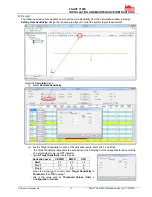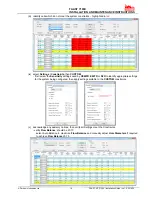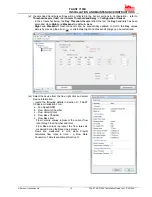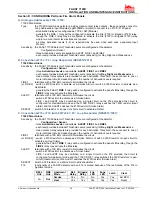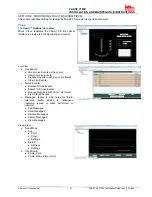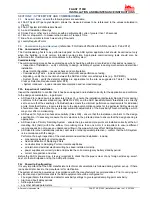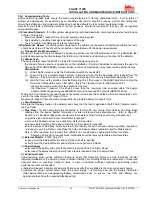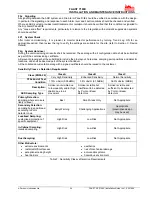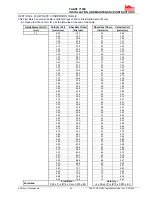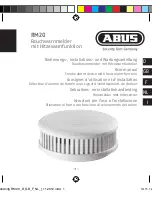
FAAST 7100X
INSTALLATION AND MAINTENANCE INSTRUCTIONS
© Pertronic Industries Ltd
10
FAAST XS (7100X) Installation Guide Iss 1.0, 201606
Alarm
Level
Threshold
High
Sensitivity
Threshold
Low
Sensitivity
Current
Level
Alert
Alert High
Alert Low
Acclimate Alert Level
Fire 1
Fire 1 High Fire 1 Low Acclimate Fire 1 Level
Fire 2
Fire 2 High Fire 2 Low Acclimate Fire 2 Level
Table 6 : Acclimate Levels
Reset AirFlow Baselines:
The AirFlow baselines may be reset through the LCD
screen. The FAAST XS unit enters a five minute
baseline period and resets its current airflow baselines
- this is displayed on the LCD interface,
If an AirFlow condition exists, perform a visual
inspection of the pipe
network to ensure the integrity
of the pipe network and that the flow condition is not
caused by breakages or blockages
Isolate Mode:
From Normal Mode, Isolate mode is initiated through
PipeIQ mimic tab or
through the LCD interface. The
device sets the Isolate relay and Isolate mode is
indicated on the user interface. The Alarm and Fault
relays
reset and subsequently do not change state. In
all other respects, the unit
continues to operate
normally. Any smoke exceeding Alarm thresholds
causes Alarm conditions to appear on the detector’s
user interface, but the
Al
arm relays do not activate
Disable Mode:
The user can initiate Disable Mode through the LCD
interface only. When
Disable Mode is activated, the
device sets the Isolate relay and the user
interface
displays the Disable fault. In Disable Mode, the fan
ceases operation and the Particulate, Alarm and
AirFlow displays on the user interface
will not illuminate.
The Alarm and Fault relays reset and subsequently
not
change state. This mode should only be used when the
system needs to
be taken offline.
Disable mode remains active indefinitely until the
user removes the
device from Disable mode.
All communication interfaces remain active when the
device operates in Disable mode
Day, Night, Weekend Mode:
Day, Night, Weekend mode is the default setting which
may be used if Acclimate mode is not desired. This
allows the device to have separate threshold levels for
simple Day, Night and Weekend mode. Times can be
configured, if desired, for entering and exiting the Day
and Night time operation. It transitions to Weekend
mode on Saturday and Sunday. The device has an
internal time reference (clock) that maintains the time
whether power is applied or removed. Daylight savings
time may be enabled in the configuration to account for
time changes
Acclimate Mode:
The FAAST XS system includes an Acclimate mode. By
allowing the device to operate in Acclimate mode, a
device’s susceptibility to nuisance
alarms can be
reduced. This provides maximum protection for a
device located in changing environments. The
sensitivity of the unit continuously
adjusts over time,
within user defined limits, as the environment changes.
Acclimate mode must be activated and configured with
the PipeIQ software.
In Acclimate mode the device
automatically adjusts the Alarm point between
a
specified minimum and maximum sensitivity,
programmed by the user. For
the first 24 hours of
operation the device monitors the environment. After
the
initial 24 hour period, the device adjusts the Alarm
point based on the particulate levels over a rolling 1
hour period. It then adjusts the Alarm level starting
from
the insensitive boundary, based on the stability of the
environment being
monitored
Setting Acclimate Mode:
The user chooses the boundaries for each alarm level
in the Acclimate mode
The FAAST XS system starts
from the insensitive boundary and adjusts itself
to stay
within the sensitive boundary. It is also possible to have
static alarm
levels by adjusting the high and low
boundary to the same level. This allows
the flexibility to
maintain acclimating levels for some alarms and static
levels
for others. Table 6 shows the various levels that
are available.
Each Acclimate level is also able to be
monitored in PipeIQ. This allows the
user to read the
current Acclimated alarm level for each Alarm

















